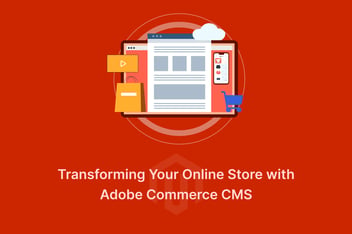Managing shipments is a crucial aspect of any successful e-commerce platform. Adobe Commerce Magento 2, one of the most popular e-commerce platforms in the market, provides a wide range of functionalities to manage shipments effectively. In this blog post, we'll explore the various features of Magento 2 shipping, and how they can be utilized to create a customized and efficient e-commerce platform. So let's dive in and explore the world of Magento 2 shipment!
Shipment in Adobe Commerce Magento 2
According to studies, low shipping costs and quick delivery are two critical factors in the success of online businesses. As a result, shipping is an essential component of any e-commerce store, and Magento 2 provides numerous features to help you manage shipments effectively. Some of the key features of Magento 2 shipment are as follows:
Shipment Tracking: You can track shipments in real-time and provide customers with shipment tracking information through their account or email.
Multi-Shipping: It allows customers to ship items to multiple addresses in a single order, making it easy to send gifts or items to different locations.
Shipping Methods: Adobe Commerce Magento 2 offers a range of shipping options to help you manage your orders seamlessly. You can configure shipping methods and rates by going to Stores > Configuration > Sales > Delivery Methods. Here, you will see a list of available shipping methods, and you can enable or disable them as per your requirements. You can also configure the rates for each shipping method, including the price, handling fee, and any additional charges. The delivery methods available in Magento 2 are as follows:
-
Free Shipping
Free shipping is a popular shipping method that allows customers to receive their orders without having to pay any shipping fees. You can set up free shipping based on certain conditions, such as the order amount or the customer’s country. Also, tax can be included or excluded from the minimum order amount. This method can be used as a promotional tool to attract customers and increase sales.
-
Flat Rates
It charges a fixed rate for shipping, regardless of the order size, weight, or destination. This method is often used by small businesses that have limited shipping options or resources, and it provides a predictable shipping cost for customers.
-
Table Rates
Table rate shipping allows you to set up shipping rates based on a combination of factors:
- Weight to Destination
- Price to Destination
- Quantity of Items to Destination
You can create a table that lists the shipping rates for different weight ranges and destinations, and Magento will automatically calculate the shipping cost based on the customer's order details. It is a flexible and customizable option that can be used to accommodate different shipping scenarios.
-
In-Store Delivery
In-Store Delivery facilitates you to give customers the option of picking up their orders from your store during the checkout process. It enables you to create a unified omnichannel shopping experience and gives customers more control over their purchasing experience.
-
Carrier Calculated Shipping
This shipping method allows you to calculate shipping rates based on the carrier's API. You can integrate with popular carriers such as UPS, USPS, FedEx, and DHL to provide real time shipping rates to your customers.
Once you have set up the shipping methods and rates, customers will be able to see the available shipping options during the checkout process. They can then choose the shipping method that best suits their needs and complete their order.
By understanding the different shipping methods available in Adobe Commerce Magento 2 and how to configure them, you can provide customers with a seamless shipping experience and improve overall business performance.




